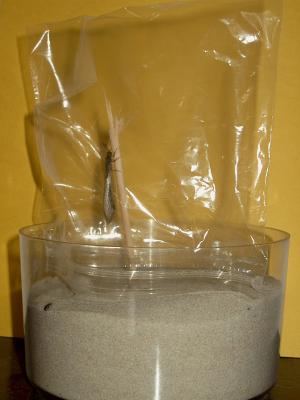Hatching Antlions
At some point your antlion may stop making pits. You might think something is wrong, but what is actually happening is your antlion is cocooning itself.
Antlion larva have been known to live anywhere from one to three years. Then they cocoon themselves for about a month, and emerge as a winged adult antlion. When they do cocoon, it is a good idea to use netting so that the adult won’t escape — it will almost certainly emerge from its cocoon when you’re not watching. A stick placed upright in the sand will provide the newly emerged adult with a place to rest while its wings expand and harden properly. Ideally, the adult antlion should be returned outside within a day after emerging from the cocoon. If held captive any longer, it will lose energy and may die. The adult antlion lives from 30 to 45 days.
Here are some thoughts from one of our customers:
From Michelle Nash:
Just a set of pics of how we prepared for the hatching. Very simple set up for anyone.
Items Used: Sand bowl, stick, sandwich bag.
I lightly watered the sand once a week. Not directly on the cocoon, but in the vicinity. I have found this helps insects hatch in the best shape because in the wild, they would usually experience some moisture in the form of rain or dew periodically. I’ve noticed we’ve had butterflies hatch out smaller in the spring, if I didn’t mist them a few times during the winter. The key here, of course, is to be sure they can dry out quickly. You don’t want them drowning or have mold attack them.

